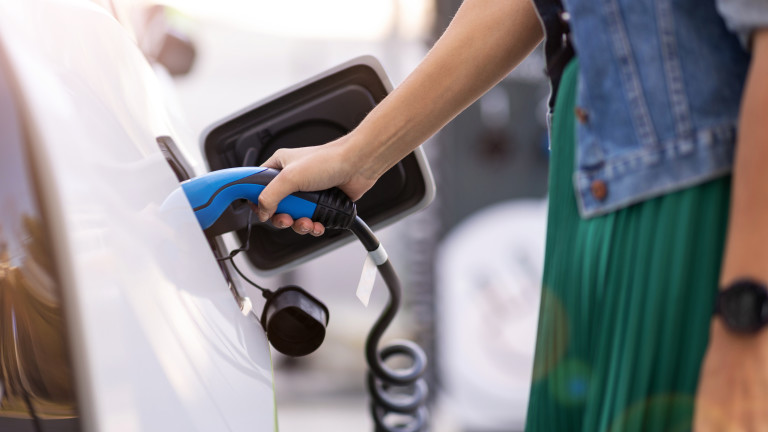In the race to produce the next generation of electric car batteries, the stakes are high.
Toyota Motor, the world’s largest carmaker, has long been considered a major contender for the production of so-called solid batteries – which will be more stable and charge faster than the lithium-ion batteries used today. Toyota plans to present a prototype of a new car powered by such a battery by the end of the year, writes Nikkei.
But the German Volkswagen is not sleeping. This year, the manufacturer has increased its investment in QuantumScape, an American startup that runs on a solid battery. The company, backed by billionaire Bill Gates, said on May 14 that VW would soon decide where the location of a new co-production plant would be. The goal is for it to work by 2024.
Electric cars are considered a key part of global efforts to reduce emissions, and other manufacturers are also increasing their stakes.
Ford Motor, which this month increased its investment in the startup Solid Power, also joined the race. BMW also joins as the US manufacturer in the latest round of funding.
In January, Chinese manufacturer Nio said the company’s new sedan, to be introduced in 2022, would have solid batteries and reach 1,000 km on a single charge – although a number of experts speculate that the battery is likely to be half solid. , half with liquid. And Korea’s Hyundai said last month that it would produce electric cars with solid batteries by 2030.
“There is no battery or car manufacturer that doesn’t study solid batteries … The technology is too ‘hot’ to ignore,” said Christoph Neif, a senior scientist at Germany’s Fraunhofer Institute for Systems and Innovation Research ISI.
Increasing competition is a huge challenge for Japan. China and South Korea have rapidly eroded the dominance of the Land of the Rising Sun in lithium-ion batteries. The authorities in Tokyo are determined not to allow this to happen again and have created the public New Energy and Industrial Technology Development Organization (NEDO), which is leading the process of developing the new generation of batteries and providing funds to car and battery manufacturers to support the efforts.
China and South Korea are responsible for more than 70% of battery shipments in 2020. Panasonic, which makes batteries for Tesla, is the only company in the top seven. And in 2013, Japan held more than 50% of the market.
Solid batteries are a type of lithium-ion battery, but differ in some key respects. Instead of a flammable liquid, they contain thin layers of solid electrolytes through which ions pass. Electrolytes also work on separators, reducing the risk of fire and the amount of raw materials needed for production.
Solid batteries will also have a higher energy capacity – that is, they will be able to hold a larger charge at the same weight. This will allow manufacturers to increase the mileage of electric vehicles or offer smaller, cheaper and lighter batteries that carry the same mileage. They will also be able to charge faster, as there will be no need for heat protection. Solid batteries are virtually non-flammable, said Kyoshi Kanamura, a professor at Tokyo Metropolitan University.
VW says QuantumScape batteries will offer 30% more mileage than a lithium-ion battery of the same size and weight. And it will charge up to 80% in 12 minutes.
Tesla is missing from the race. CEO Elon Musk did not mention the topic.
Toyota has been working on the next generation of batteries for more than a decade, but the challenges are still there and the technology is not yet ready.
Honda, under the management of new director Toshihiro Mibe, is also stepping up development. In April, he said the new type of batteries would begin to be used in the company’s electric vehicles in the second half of the decade.
One of the biggest difficulties in ensuring sufficient contact between solid electrolytes and electrodes is something that is easy in traditional batteries, where the electrolyte solution fills the space between the electrodes. Some experts say that the most efficient way to achieve this is to assemble the batteries by hand, which is not efficient as a production process for large manufacturers.
– .


